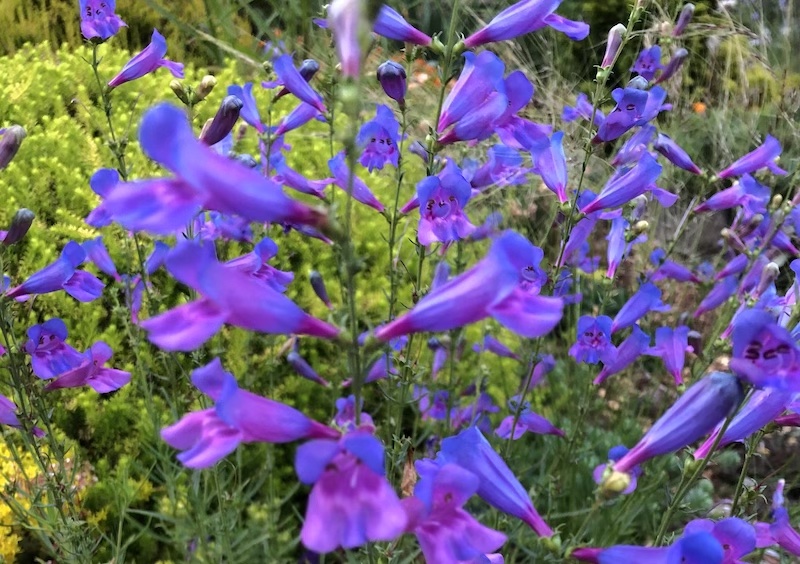Pruning is not a big part of maintaining Beardtongue (Penstemon), but learning how to properly trim this plant is easy and will promote new growth. Trimming Beardtongue rejuvenates growth and helps the plant continue to bloom and overall look its best. Minimal trimming throughout the year is not always necessary, but it is beneficial. Beardtongue is an herbaceous perennial, so most pruning should occur at the end of the growing season.

When to Prune Beardtongue
Deadhead Beardtongue throughout the growing season. This plant blooms in the spring and summer, with bell-shaped flowers growing from tall stems. Beardtongue continuously blooms, with more buds being set and coming into bloom throughout the growing season. Flowers can be pinched back or removed as soon as they start to fade. Most Penstemons will self-seed if faded blooms are left to set seed.
Beardtongue is an herbaceous perennial, so the above-ground growth dies in the fall. Resist the urge to trim the plant as soon as the last flowers fade. Leave the greenery in place so the foliage can soak up sunlight to prepare for the next growing season. Leave the vegetation in place for at least a few weeks before removing it, or wait for the first frost. Remove all the growth by fall to clean up the space and reduce the risk of mold or pests.
Why Prune Beardtongue
Removing spent flowers or deadheading directs energy into new growth. Removing declining growth enables the plant to refocus on producing more flowers instead of setting seed. The plant may set more buds where previous flowers have been removed, extending the blooming cycle.
How to Prune Beardtongue
Step 1 - Observe the plant and look for dead, damaged, or declining growth.
Remove dead foliage and fading flowers as they appear.
Step 2 - Remove the flowers, but leave the main stalk in place.
Beardtongue will continue to set flowers on the same stalk, so leave it in place and remove the individual flowers as necessary.
Step 3 - Remove all growth in the fall.
Cut back the flower stalk and all foliage to the ground level in the fall. Or allow the faded blooms to set seed to propagate new plants.
Beardtongue Pruning Tips
- Remove dead or damaged growth as necessary
- Deadhead Beardtongue to create a tidy appearance and encourage more blooms
- Trim back all growth in the fall
 |
Author Alison Cotsonas - Published 05-03-2023 |
